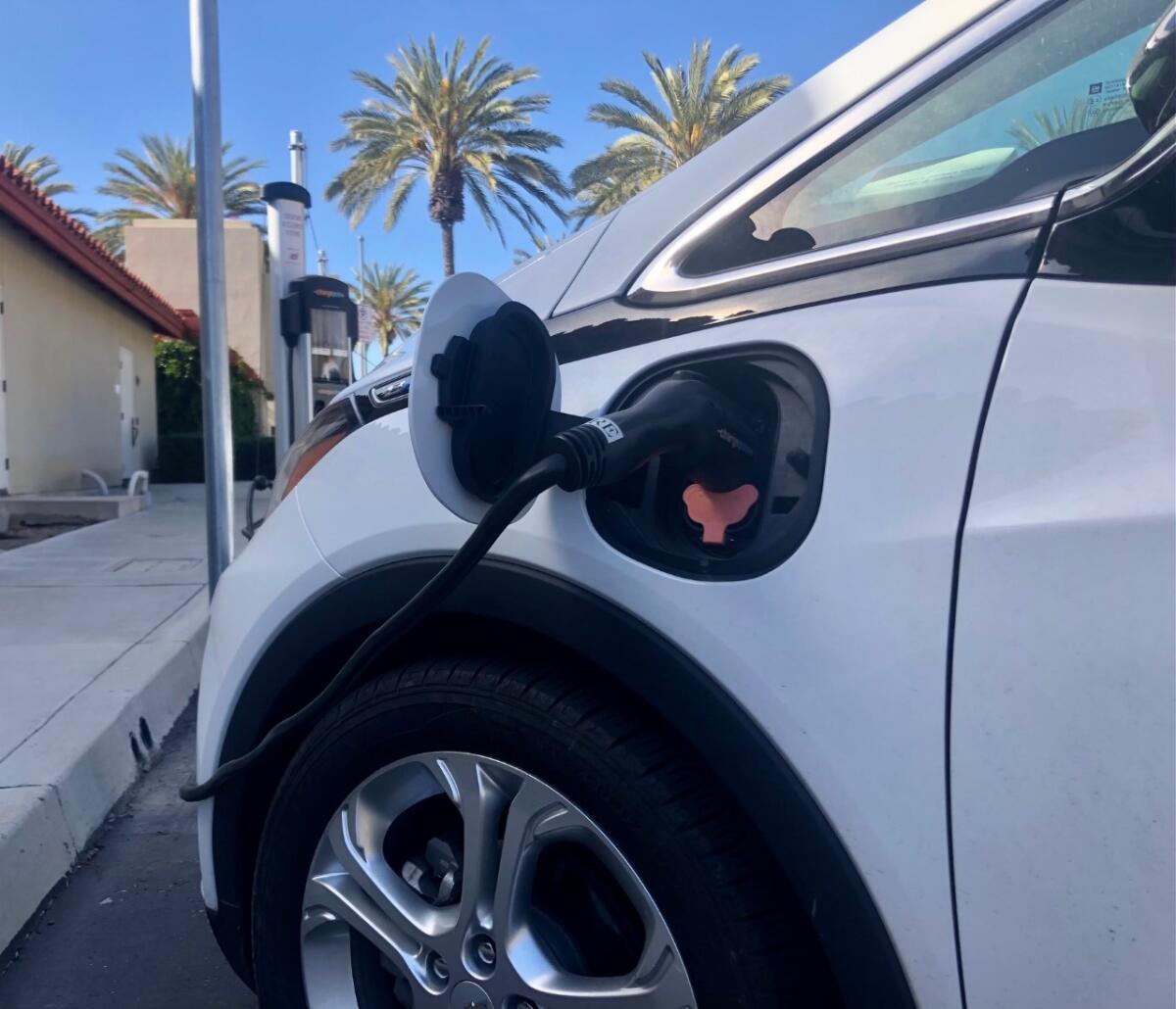EPA wants to speed up EV switch. Good, the planet needs it

- Share via
The Biden administration just proposed hitting the accelerator on the transition to electric vehicles. If these ambitious new rules are enacted, the U.S. could make major progress in fighting climate change.
The Environmental Protection Agency on Wednesday released new pollution standards for passenger cars and trucks that would be the strongest vehicle emission regulations to date. To comply, automakers would have to significantly increase the number of electric vehicles they produce over the next decade.
That would be a huge change in the vehicle market, which has slowly been rolling out zero-emission models. Last year, about 6% of passenger cars and trucks sold were electric. The proposed emission limits are so strict, the EPA expects that about 67% of passenger vehicles sold by 2032 would be electric in order to meet the standards.
Not many electric vehicles in the U.S. will be eligible for federal subsidies under Inflation Reduction Act guidelines due to battery and minerals sourcing restrictions.
The proposal would also transform the commercial sector, in which there are now few electric models on the roads. By 2032, about half of new buses, garbage trucks and delivery vans sold would have to be electric, and 25% to 35% of new heavy-duty trucks would be zero-emission models.
Swapping out that many combustion engines would slash planet-warming pollution from the transportation sector, which is the largest source of greenhouse gas emissions in the U.S. The EPA projects the regulations would avoid putting into the atmosphere nearly 10 billion tons of carbon emissions, which is the equivalent of two times the total U.S. carbon emissions in 2022.
These vehicle pollution standards could be one of the United States’ most important steps in staving off the most devastating effects of global warming and reducing exposure to unhealthful pollution — if the regulations are put into place. As of now, they are just proposals and need to go through a public comment period before the EPA adopts the regulations, which are expected to become final next year and begin to apply to 2027 model-year vehicles.
Auto industry representatives have raised concern that the EPA’s proposal may be too much, too fast. The rules would go further than Biden’s previous goal of having half of all cars sold in 2030 be electric.
U.N. climate report shows we can’t just phase out oil and gas; we have to deliberately dismantle existing infrastructure, such as coal plants in China and drilling in Alaska.
There are legitimate questions about supply chain readiness, including the availability of materials used in battery manufacturing, which could drive up the price of EVs. There are also real worries about whether the U.S. will have the charging stations and electric grid capability to power all those new EVs. Cost and the lack of charging stations are key reasons why 60% of consumers said they are not likely to buy an electric car as their next vehicle, according to a recent survey.
Those are challenges that must be addressed more urgently. But that doesn’t mean the EPA should wait for all problems to be solved before pressing ahead with aggressive vehicle emissions standards. Regulations drive results, and the planet needs results quickly.
A United Nations report released last month warned the planet is on track to blow past 1.5 degrees Celsius (2.7 degrees Fahrenheit) of warming, a critical threshold virtually every nation on Earth has agreed to work to avoid to prevent greater harm from climate change. To avoid that fate, the Intergovernmental Panel on Climate Change said the world needs to slash greenhouse gas emissions by 60% by 2035.
Reaching that requires transforming the transportation sector. It will not be easy, but it is doable and one of the most important steps the U.S. can take now to give the world a fighting chance against climate change.
More to Read
A cure for the common opinion
Get thought-provoking perspectives with our weekly newsletter.
You may occasionally receive promotional content from the Los Angeles Times.











